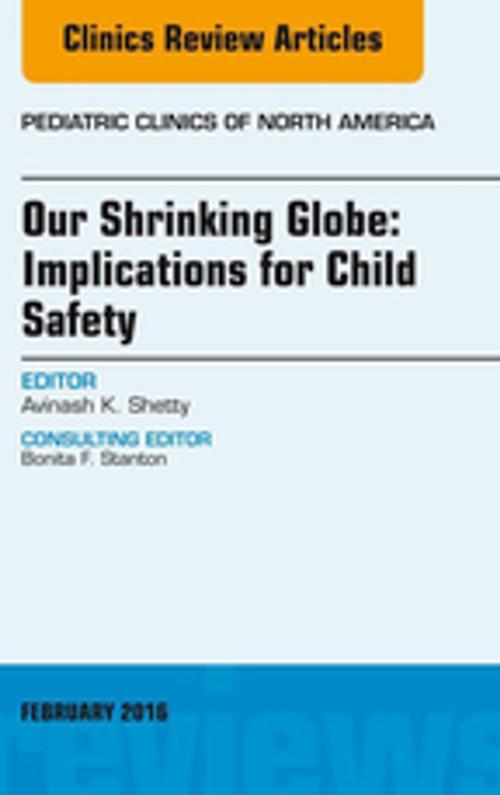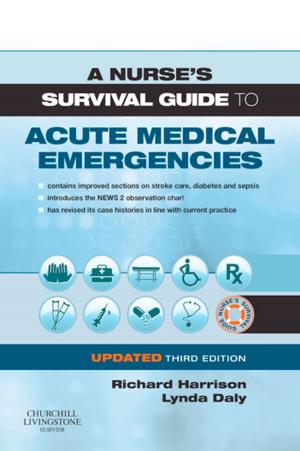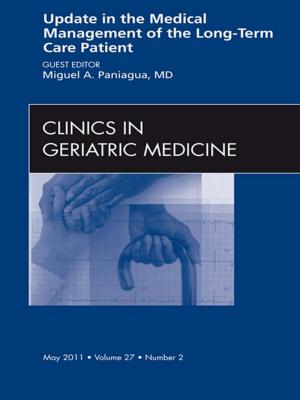Our Shrinking Globe: Implications for Child Safety, An Issue of Pediatric Clinics of North America, E-Book
Nonfiction, Health & Well Being, Medical, Specialties, Pediatrics, Reference| Author: | Avinash Shetty, MD, FAAP, FIDSA | ISBN: | 9780323417099 |
| Publisher: | Elsevier Health Sciences | Publication: | January 19, 2016 |
| Imprint: | Elsevier | Language: | English |
| Author: | Avinash Shetty, MD, FAAP, FIDSA |
| ISBN: | 9780323417099 |
| Publisher: | Elsevier Health Sciences |
| Publication: | January 19, 2016 |
| Imprint: | Elsevier |
| Language: | English |
Pediatricians in the Unites States and around the World continue to face a myriad of global health threats affecting child and adolescent health including: 1) infectious diseases of poverty [e.g. human immunodeficiency virus (HIV), tuberculosis, malaria, and neglected tropical diseases] in low-and middle-income countries (LMIC), especially in sub Saharan Africa; 2) emerging and reemerging infectious diseases (such as Ebola); 3) rise of non-communicable diseases (e.g. common mental disorders); 4) unintentional injuries; and 5) environmental health hazards (e.g. climate change). Despite the promising news about rapid declines in maternal and child mortality in the era of Millennium Development Goals (MDGs), which originated from the United Nation (UN) Millennium Declaration in 2000, only 20% and 7% of LMIC are currently on track to attain the maternal and child mortality targets. For example, 44% of deaths in children younger than 5 years occur in neonates.
Besides discovery of life-saving interventions (e.g. development of new and improved vaccines) for maternal and child health, we also need to do a better job at bridging the knowledge-implementation gap and increase the effectiveness of proven interventions. For example, despite the availability of effective vaccines to prevent pneumococcal pneumonia, rotavirus gastroenteritis, and human papilloma virus-related diseases (e.g. cervical cancer), use of these vaccines remain suboptimal in LMIC.
We need to recognize that global health is also local public health. For example, improving access, equity and quality of care for orphans and vulnerable children, immigrant and newly arrived refugee children in the U.S. remains a challenge. Timely access to psychiatric care for children and adolescents with mental illness is a major concern. The explosion of new age technology (such as the internet) also poses a considerable risk to children and adolescents. Pediatricians also need to be aware of diverse socio-cultural determinants of health and ethical issues in global health service and delivery.
This issue of Pediatric Clinics of North America aims to address the above crucial global health challenges affecting children and adolescents. As practicing pediatricians, we have the unique opportunity to influence local and global public health. In the post-MDG era (beyond 2015), collaborative partnerships between various disciplines and across research, education and service is vital to reduce health inequities in children worldwide.
Pediatricians in the Unites States and around the World continue to face a myriad of global health threats affecting child and adolescent health including: 1) infectious diseases of poverty [e.g. human immunodeficiency virus (HIV), tuberculosis, malaria, and neglected tropical diseases] in low-and middle-income countries (LMIC), especially in sub Saharan Africa; 2) emerging and reemerging infectious diseases (such as Ebola); 3) rise of non-communicable diseases (e.g. common mental disorders); 4) unintentional injuries; and 5) environmental health hazards (e.g. climate change). Despite the promising news about rapid declines in maternal and child mortality in the era of Millennium Development Goals (MDGs), which originated from the United Nation (UN) Millennium Declaration in 2000, only 20% and 7% of LMIC are currently on track to attain the maternal and child mortality targets. For example, 44% of deaths in children younger than 5 years occur in neonates.
Besides discovery of life-saving interventions (e.g. development of new and improved vaccines) for maternal and child health, we also need to do a better job at bridging the knowledge-implementation gap and increase the effectiveness of proven interventions. For example, despite the availability of effective vaccines to prevent pneumococcal pneumonia, rotavirus gastroenteritis, and human papilloma virus-related diseases (e.g. cervical cancer), use of these vaccines remain suboptimal in LMIC.
We need to recognize that global health is also local public health. For example, improving access, equity and quality of care for orphans and vulnerable children, immigrant and newly arrived refugee children in the U.S. remains a challenge. Timely access to psychiatric care for children and adolescents with mental illness is a major concern. The explosion of new age technology (such as the internet) also poses a considerable risk to children and adolescents. Pediatricians also need to be aware of diverse socio-cultural determinants of health and ethical issues in global health service and delivery.
This issue of Pediatric Clinics of North America aims to address the above crucial global health challenges affecting children and adolescents. As practicing pediatricians, we have the unique opportunity to influence local and global public health. In the post-MDG era (beyond 2015), collaborative partnerships between various disciplines and across research, education and service is vital to reduce health inequities in children worldwide.















